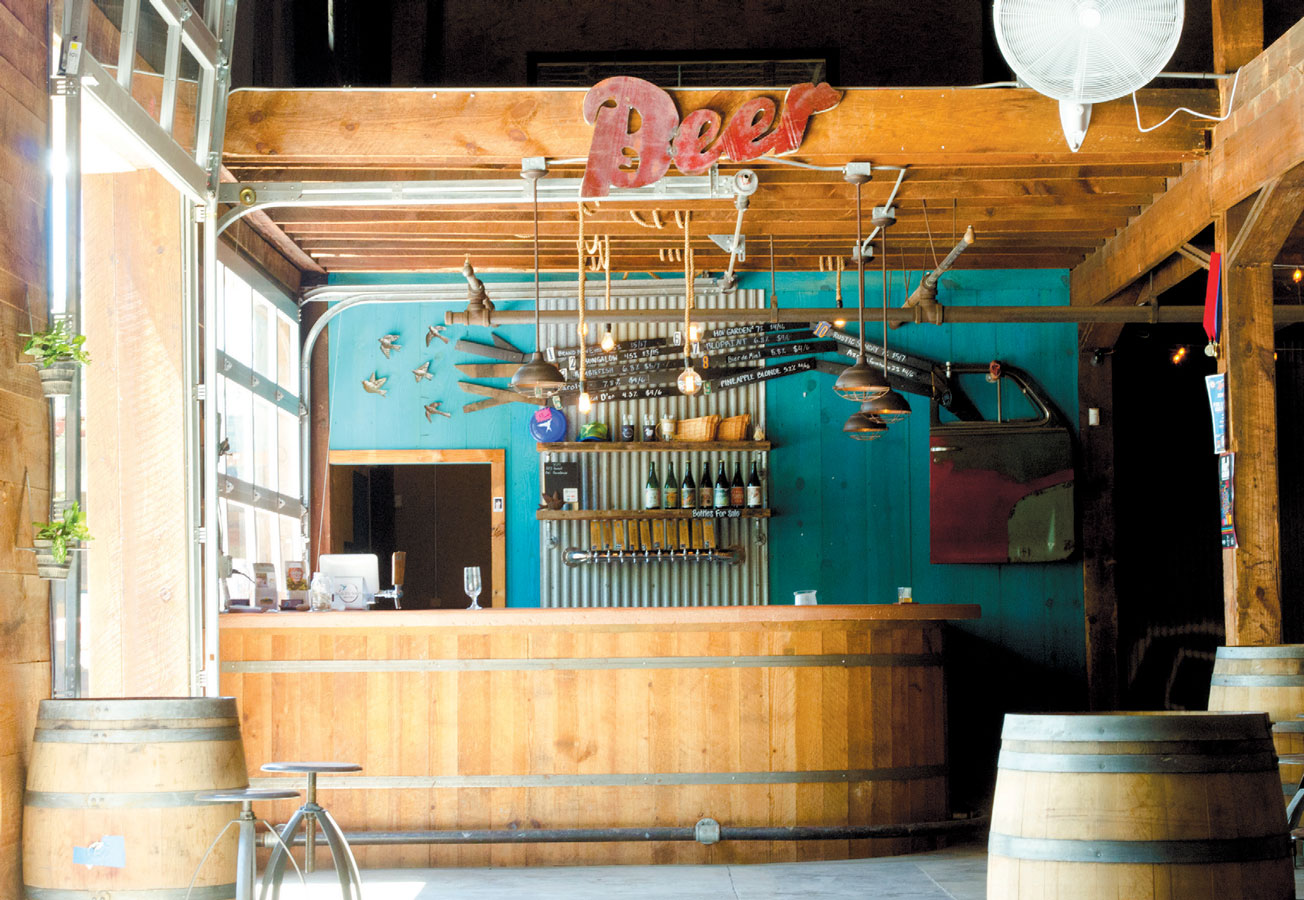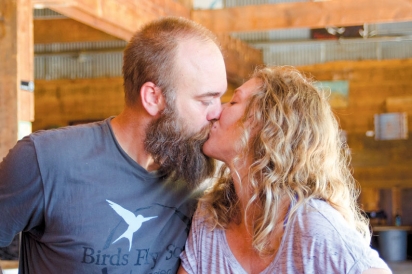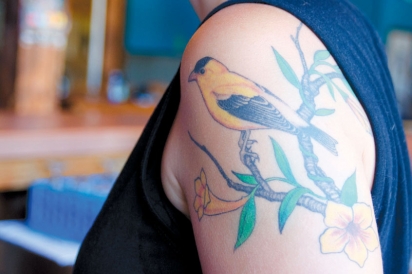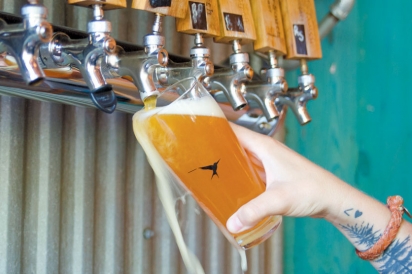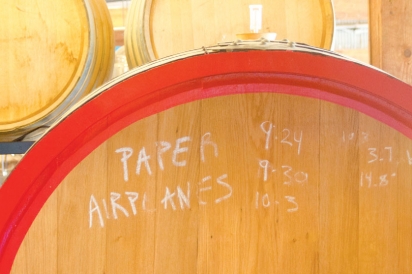The Story in Your Beer
This is no marketing ploy—BFS depends on local farmers and flavors to make beer.
There’s the can of beer you sneaked sips of while your dad wasn’t looking, wheaty, dry, and light. It smelled like him, like summer and mowing lawns.
And then there’s the bottle you chugged at a college party, glancing sideways to make sure you were holding it right.
But somewhere along the way, beer became something else entirely. Here in the south, the craft beer revolution has found welcome soil as breweries and taprooms grow roots, becoming a community known for its camaraderie and collaborations.
So while you may be an IPA guy—or a light beer loyalist, maybe even snuggling with your stout in the cooler months—for what it’s worth, I like sours.
I was in my friend’s kitchen the first time I tried one, a glass shoved my way. “You ever tried one of these?”
It was amber, like a nut brown ale, but I inhaled a sharp, crisp, citrusy aroma. And behind that, a funky yeasty feral smell. All in one inhalation, a story. The first sip? A shock to the system. There’s a story here, I thought, inside this glass. That sour beer woke up the possibilities of what beer could be. Sometimes we are in need of a plot twist.
I guessed I wasn’t alone, and I knew for certain when I showed up last year for Birds Fly South’s opening weekend in Greenville. “An Ale Project,” they call themselves, keenly and carefully crafting farmhouse saisons and sours with an expert touch and a creative’s flair. I didn’t even get a pint that first day. People crawled and crowded the new property like thirsty ants.
Owners Shawn and Lindsey Johnson are just as bowled over by the response. “We have been pleasantly surprised and humbled by Greenville’s acceptance of Birds Fly South and our vision. We are challenged positively by the folks that frequent our tasting room.”
Under the rough-hewn wooden beams of their space in an old cotton warehouse at Hampton Station, racks of barrels and stainless steel tanks (named for favorite bands and musicians as diverse as their creations) contain various stages of fermenting beer. These are the beers that won Birds Fly South a place on Beer Advocate’s list of best new breweries of 2016.
During his career with the US Coast Guard, Shawn tasted the brew that changed the course of his story. The beer? “Saison Athene from Saint Somewhere. It inspired me to work as an apprentice for Bob Sylvester at his brewery in Tarpon Springs, and it pushed Birds Fly South out of its nest. Everything I learned about saisons I learned from Bob—he's truly the master. He taught me how to brew farmhouse style using open fermentation.”
So, after 22 years of military migration, the transient family of “birds” found a nesting place down south, brewing first at Thomas Creek before opening the space in Greenville. “We decided we’d give it a year,” Shaun remembers. “Once we landed in Greenville, we knew we had found our home. This is where we as a family, and as a brewery, are supposed to be.”
Home is what a saison is, really. It literally translates to “season.” In the beer world, it’s known as a sturdy ale traditionally brewed by farmers in France’s wine country in the wintertime and consumed in the summertime. When a saison is made, it tells the story of a particular landscape in a particular time.
"It characteristically starts with a really good simple base and from there you can throw in so many fresh flavors," Shawn explains. It’s this freshness that makes partnerships with local farmers a necessity.
Recent BFS concoctions include peaches and blackberries from Clemson’s Musser Fruit Research Center, local honey, locally roasted coffee, and even green strawberries. Lindsey stressed this isn’t just a marketing ploy: “By building alliances with local farmers and their understanding of the seasonal variability of South Carolina’s crops, we hope to provide the freshest possible, locally inspired beers. It’s through these partnerships that education in farming and our styles of brewing can flourish.”
These beers tell story of a crop and even the air we breathe. With an open fermented beer (literally open: the tank is gaping at the top) the microflora in the air inoculates the beer which will eventually cause fermentation while also lending the “wild” and “funky” flavor profiles which define them. Drinking a beer created with wild yeast means that you are enjoying something that can only come from here on a certain day, season, or month. Shawn explains, “Something like our Rumblefish or Brand New Eyes is going to taste slightly different depending on the season it’s made. Depending on the humidity, the barrel, anything.” From beginning to end, a beer may take from three weeks to a year before it’s bottled.
While many breweries are making a sour ale now—following trendy demand—Birds Fly South is “progressively old school,” using time-worn recipes and methods but turning them on their heads with flavor profiles and combinations. “Our mission statement here at BFS is “Don’t be afraid, push yourself, explore beer. We wouldn’t say it’s necessarily a risk, it’s just the way we roll. We like to say ‘we don’t make beer, we wait for the beer to tell us what it wants to be.’”
Walking through their tasting room, with its wide community tables and a bar open to the beer garden outside, the place feels like it’s been around for decades instead of a mere eleven months. With a cold pint of Carolyn condensating in hand (hibiscus saison dry-hopped with Methodical coffee), I wander through their brewing operation to the newly expanded back warehouse. They’re bursting at the seams and quite literally breaking down walls, hoping to double production soon to meet demand.
I’m looking for another link in this cyclic farm-(to-air-)to-beer-back-to-farm story. It’s in a wide, white bin by the loading dock in the back parking lot. Inside is a load of what looks a little like wet sawdust, waiting to be picked up by Paul Coleman and Pete Luker for their livestock at Early Bird Farm.
I lean over the bin and breathe in. It smells like beer, which for some reason surprises me. It gives off its own humidity and almost demands you sink your hands into it. Mid-whiff, a laugh startles me: “The pigs love it, they just eat it up,” Paul says, his eyes twinkling. Caught, I bolt upright and pray he’s not making any sort of comparison. He stops by most Thursdays to pick up the spent grain from the week’s batches. Before pulling away with the grain, he hands Lindsey a shrink-wrapped package of jowl bacon and all-beef salami. “This is the good stuff here—you’ve got breakfast, you’ve got lunch, and back in your refrigerator there’s your dinner.” He smiles a satisfied grin, wipes the sweat from his head, flops on a shapeless straw hat, and ambles off. I love the simple cyclic motif here: on and on and on it seems to go.
I look back to see Shawn and Lindsey squinting in the July sun. Beers in hand, arms around each other.
Smiling, looking ahead.
Theirs is a wild, living, sometimes surprising story. I’ll drink to that.
Birds Fly South, An Ale Project
Tasting room open:
Thursday 4:00-9:00
Friday 2:00-9:00
Saturday 2:00-9:00
Sunday 1:00-6:00
Shawn and Lindsey Johnson
1320 Hampton Avenue Extension
Greenville, SC 29601
864-412-8825
Beth’s Beer Glossary
Open fermentation: fermenting via exposure to wild yeasts and bacteria native to the area. This process gives beer a distinctive flavor: dry, wine-like, usually with a sour aftertaste. These beers are then aged in another vessel, such as repurposed wine or whiskey barrels, imparting those flavors in the process.
Bottle conditioned: After fermentation is complete, the yeast is allowed to naturally carbonate the beer within the bottle instead of through forced carbonation.
Spent grain: the leftover malt and grain after most of the sugars, proteins, and nutrients have been extracting through the brewing process. This often constitutes 80% of a brewery’s byproduct.
Dry-hopping: the process of adding hops (or another element, such as coffee) after fermentation of a beer to add aroma and additional flavor.
Sour: a beer with an intentionally acidic taste created by using wild yeast and bacteria strains, fruit, and/or a “starter” from a former batch of beer.


